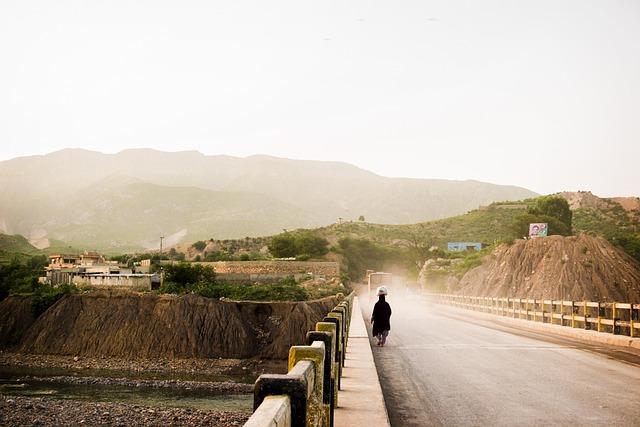In a world increasingly interconnected by trade, where borders blur and opportunities abound, Pakistan finds itself at a pivotal crossroads. With its rich tapestry of resources, diverse markets, and a young, dynamic workforce, the nation stands poised to elevate its trade landscape into a thriving hub of commerce. Yet, this promising trajectory is not without its hurdles; navigating political complexities, infrastructural limitations, and global economic shifts presents formidable challenges. As Pakistan embarks on this journey of transformation, understanding the intricacies of its trade environment becomes essential. This article delves into the opportunities and challenges that shape the future of Pakistan’s trade, illuminating the path forward while acknowledging the multifaceted realities that lie ahead.
Harnessing Regional Trade Agreements for Economic Growth
Regional trade agreements (RTAs) offer Pakistan a strategic avenue to enhance its economic landscape by opening new markets and fostering competitiveness. By participating in RTAs, Pakistan can leverage tariff reductions and trade facilitation measures to boost exports across various sectors, including textiles, agriculture, and information technology. With its geographical location serving as a bridge between East and West, Pakistan has the unique opportunity to capitalize on its proximity to high-demand markets in Asia and beyond, potentially increasing foreign investment and creating jobs. Among the RTAs that Pakistan can explore are the China-Pakistan Economic Corridor (CPEC) and the South Asian Free Trade Area (SAFTA), which not only promise immediate economic benefits but also pave the way for long-term industrial growth.
However, the successful implementation of these agreements hinges on few key challenges that must be addressed. Enhanced infrastructure development is crucial to ensure smooth transit of goods, while capacity building in local industries will help them meet international standards and compete effectively. Moreover, the government must implement sound trade policies that prioritize local industries and protect them from sudden market fluctuations. To illustrate the potential impact of RTAs, the following table outlines projected benefits of engaging with regional trade initiatives over the next five years:
| Impact Area | Projected Growth (%) |
|---|---|
| Exports to Neighboring Countries | 15% |
| Foreign Direct Investment (FDI) | 20% |
| Job Creation in Key Sectors | 10% |
| Sectoral Innovation and Capacity Building | 30% |

Innovating Infrastructure to Support Trade Efficiency
In the rapidly evolving landscape of global trade, Pakistan stands at a pivotal juncture where innovating its infrastructure is critical for enhancing trade efficiency. Enhancements in ports, roads, and logistics networks are vital for minimizing transit times and reducing costs. To effectively redefine its trade dynamics, Pakistan needs to focus on:
- Smart Ports: Upgrading the operational capabilities of ports through technology like automated cargo handling and real-time tracking systems.
- Transportation Networks: Investing in modern road and rail systems to connect key economic zones, thereby facilitating smoother logistics.
- Digital Infrastructure: Leveraging e-commerce technologies and platforms to streamline trade processes and improve access to markets.
Moreover, collaboration between public and private sectors will play a crucial role in realizing these infrastructural improvements. For instance, public-private partnerships can drive investments and ensure efficient resource allocation. An analysis of potential investment opportunities demonstrates the viability of such collaborations. Consider the following table showcasing key areas for investment:
| Investment Area | Potential Impact |
|---|---|
| Logistics Hubs | Enhanced connectivity, reduced delays |
| Digital Customs Systems | Faster clearance, increased compliance |
| Cold Chain Facilities | Improved quality for perishable goods |

Empowering Local Industries through Technology and Skill Development
Harnessing technology alongside targeted skill development presents a unique avenue for revitalizing local industries. By integrating innovative solutions, businesses can streamline operations, enhance productivity, and ultimately improve their competitive edge. Initiatives such as digital training programs and technology adoption workshops enable the workforce to embrace modern tools, fostering a culture of continuous learning and adaptation. This proactive approach not only aids in upskilling but also drives the local economy forward, ensuring that industries are equipped to meet the challenges of the global market.
Moreover, collaboration between public and private sectors is crucial in creating a robust support framework for these initiatives. Key components should include establishing tech hubs and innovation centers that connect aspiring entrepreneurs with resources, mentorship, and funding opportunities. Strengthening this ecosystem can cultivate an environment ripe for entrepreneurship and local production. To illustrate the potential benefits, consider the following table comparing traditional vs. tech-enabled industry practices:
| Aspect | Traditional Practices | Tech-Enabled Practices |
|---|---|---|
| Production Efficiency | Low | High |
| Market Reach | Local | Global |
| Skill Requirement | Basic | Advanced |

Navigating Global Market Trends to Enhance Competitiveness
In the complex landscape of international trade, understanding and adapting to global market trends is crucial for enhancing competitiveness. As Pakistan positions itself within various international trade frameworks, key trends such as sustainability, technological advancement, and shifting consumer preferences must be closely monitored. Emphasizing innovation and sustainability can significantly progress Pakistan’s export capabilities, particularly in sectors like textiles, agriculture, and IT. Companies that efficiently adapt to these trends by leveraging digital transformation and eco-friendly practices will not only improve their market share but also comply with evolving international regulations focused on sustainability.
Moreover, the rise of e-commerce platforms presents unique opportunities for Pakistani businesses to reach global consumers without the constraints of traditional trade barriers. By harnessing digital marketing strategies and optimizing supply chains, local exporters can enhance visibility and access to potential markets. To support this pivot, the government and private sector collaboration can drive initiatives such as establishing trade facilitation programs, offering financial incentives, and fostering international partnerships. The table below outlines key opportunities and challenges that Pakistani exporters might encounter as they adapt to these global trends:
| Opportunities | Challenges |
|---|---|
| Access to new markets through e-commerce | Intense global competition |
| Improved supply chain technologies | Infrastructure limitations |
| Growing emphasis on sustainable products | Compliance with international standards |
| Government-backed trade initiatives | Political and economic instability |
Concluding Remarks
as Pakistan stands at a crossroads in its trade journey, the potential for transformation is both palpable and promising. The opportunities to enhance trade relationships, tap into emerging markets, and innovate within various sectors are boundless, yet they come hand in hand with significant challenges that demand strategic foresight and collaborative efforts.
Navigating this landscape requires a dual focus—embracing the dynamism of globalization while safeguarding the interests of local industries. By fostering a culture of innovation, investing in infrastructure, and prioritizing sustainable practices, Pakistan can carve a niche for itself on the global stage.
Ultimately, the path to elevating Pakistan’s trade landscape hinges on the collective commitment of policymakers, businesses, and stakeholders alike. It is only through a unified approach to confronting challenges and seizing opportunities that the nation can thrive, reshaping its economic narrative for generations to come. As the journey unfolds, one thing remains clear: the future of Pakistan’s trade holds the promise of prosperity, provided the right steps are taken today.



